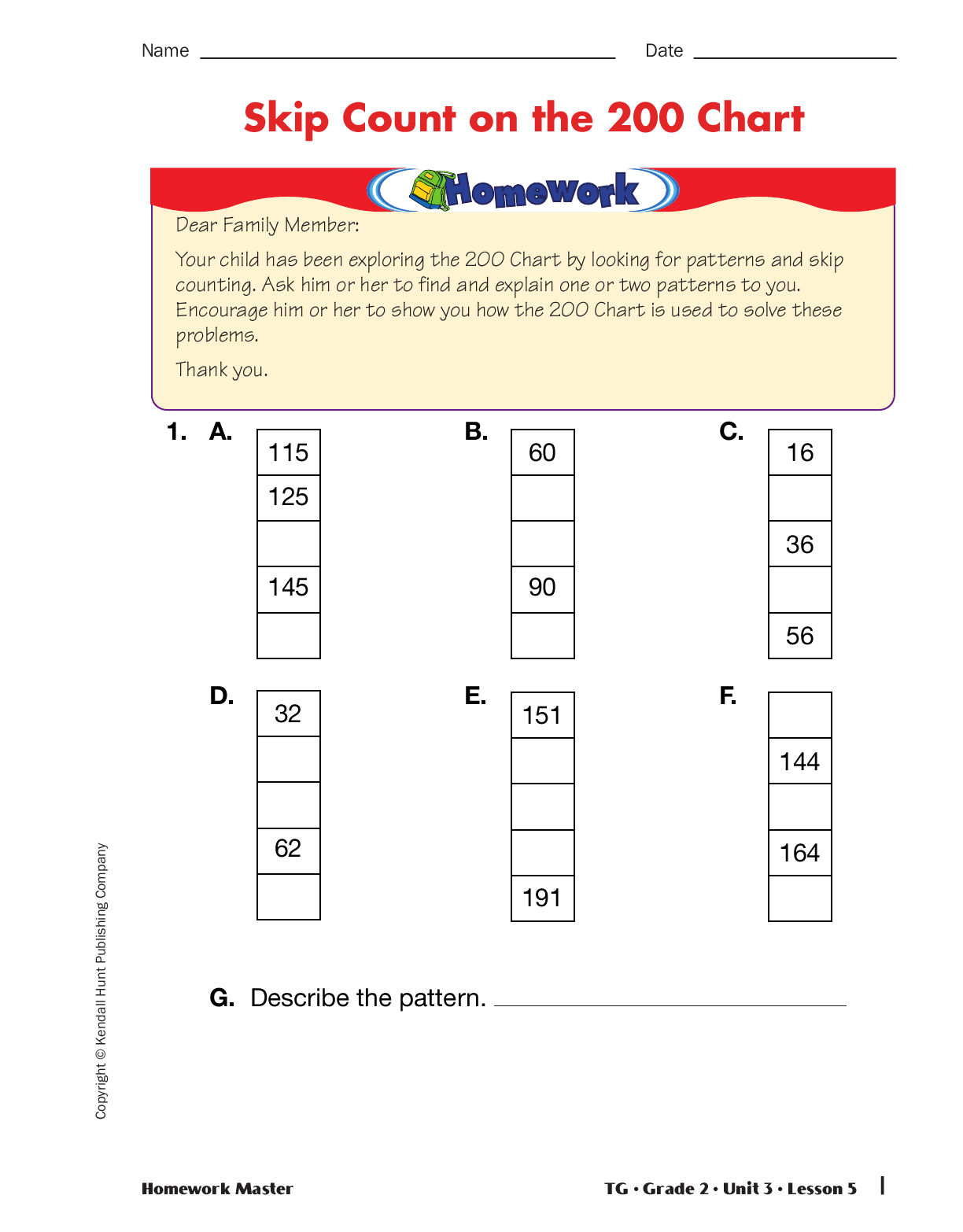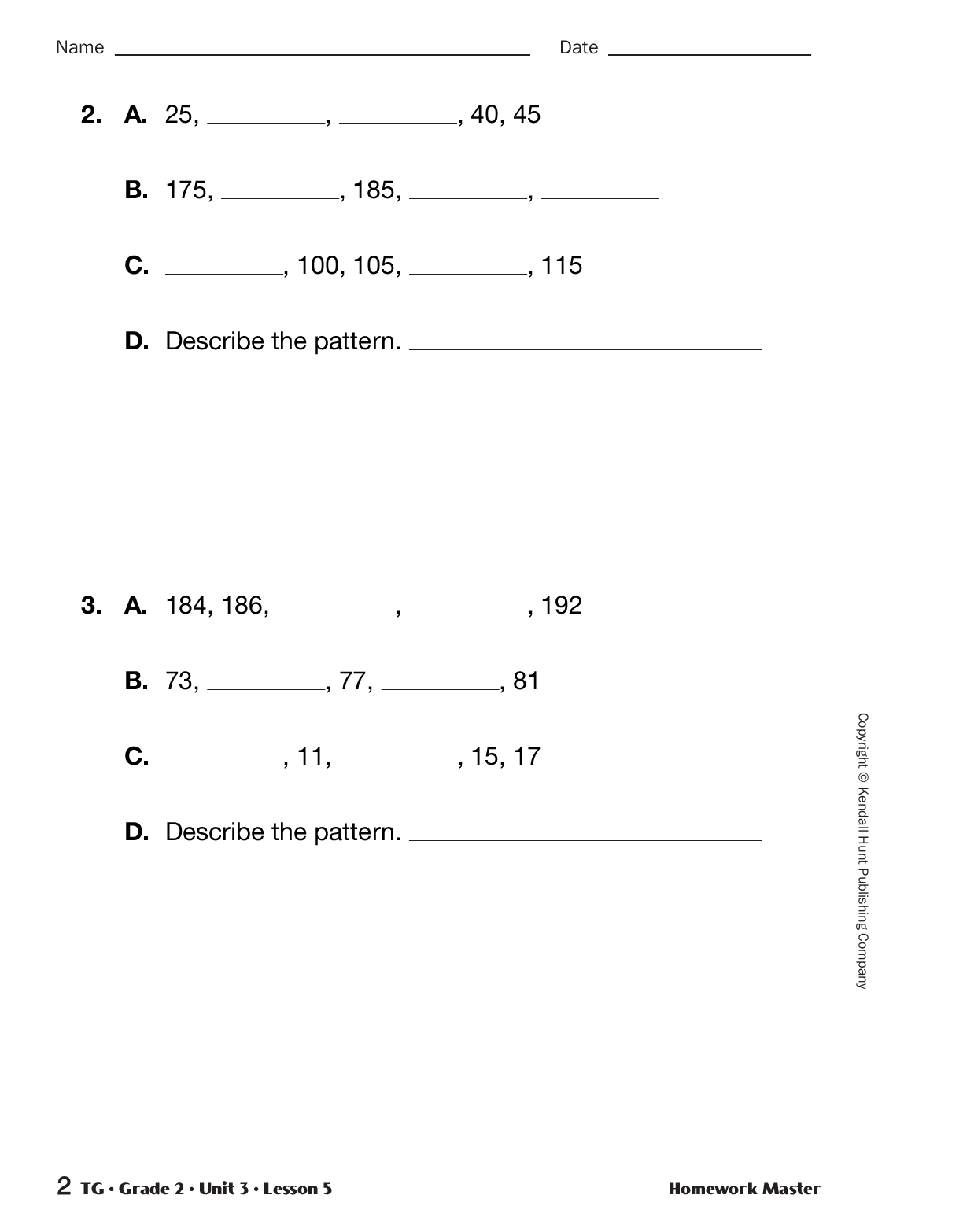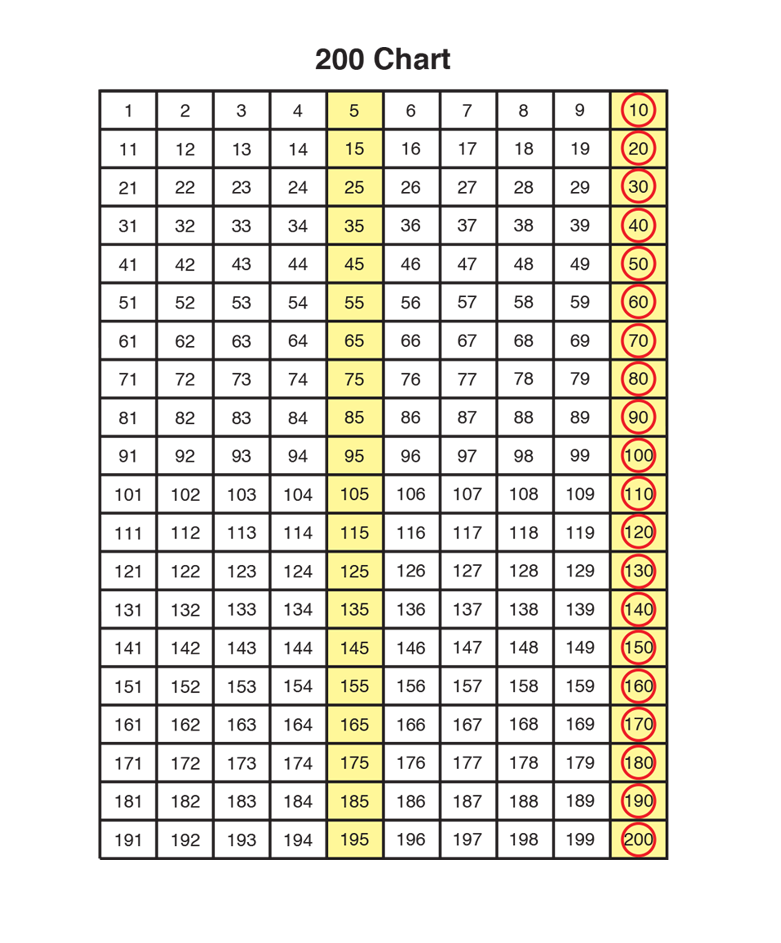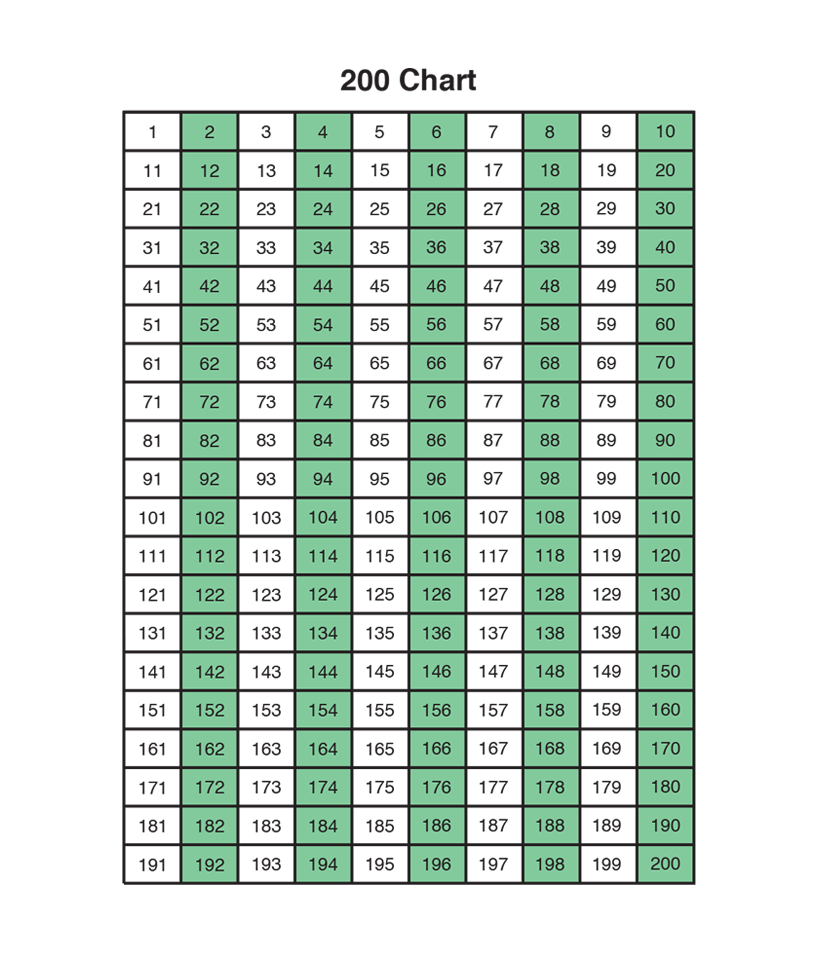Patterns on the 200 Chart
Est. Class Sessions: 2–3Developing the Lesson
Part 1: Patterns on the 200 Chart
Find Patterns in Rows and Columns. These activities help students see that the patterns and relationships they observed in the first 100 numbers apply to numbers above 100. Show a display of the 200 Chart page from the Student Activity Book. Review the terms row and column. Remind students that a row is a horizontal line of numbers and a column is a vertical line of numbers. Ask students to briefly discuss patterns they see on the chart with a partner. Have them share the patterns they see using prompts similar to the following.
Ask:
See the Sample Dialog for further discussion about 200 Chart patterns.
Skip Count by Fives. Display and direct students to
the
200 Chart page in the Student Activity Book. Ask
students to skip count by fives to 100. As each number
is called, color it yellow on the display. Invite students
to color the multiples of five yellow on their 200 Chart
page. As soon as someone recognizes the emerging
pattern, stop and discuss it with the class. See Figure 1.
Use prompts similar to the following:
Skip Count by Tens. Next ask students to start at 10 on the chart and skip count by tens. As each number is called, have students circle the multiples of ten in red. Model this on the display. Encourage students to discuss the patterns they see. See Figure 1.
Use prompts similar to the following:
Skip Count by Twos. Ask students to use the second copy of the 200 Chart in the Student Activity Book to start at zero and skip count by two. Instruct students to color these numbers green. Use a new display of the 200 Chart to do the same. See Figure 2.
Discuss the patterns with the following prompts.
Use Cubes to Model Even and Odd. Comparisons between multiples of twos, fives, and tens lead to a discussion of even and odd numbers. To review the terms even and odd, ask students to take a handful of cubes and connect them in groups of two. If there is one left over, the number of cubes is odd. For example, if a student grabs thirteen cubes, he or she can make six pairs of two with one leftover. Thirteen is an odd number. If a student grabs twelve cubes, he or she can make six pairs of two with no leftovers. Twelve is an even number. Ask students to determine whether their handful of cubes is even or odd. If they have an odd number, ask them to raise their hands. List these numbers on the board and label them “odd numbers.”
Ask:
Repeat this with students who have an even number of cubes.
Ask:
Students should recognize that all the even numbers are colored green on the chart. Ask students to discuss any patterns with the even and odd numbers that they see on the chart. See the Content Note.
Next, practice skip counting by twos starting on an odd number using the following prompts:
Assign Skip Count on the 200 Chart Homework
Master after
Part 1. Students will practice using patterns
to skip count by tens, fives, and twos on the 200
Chart.



















